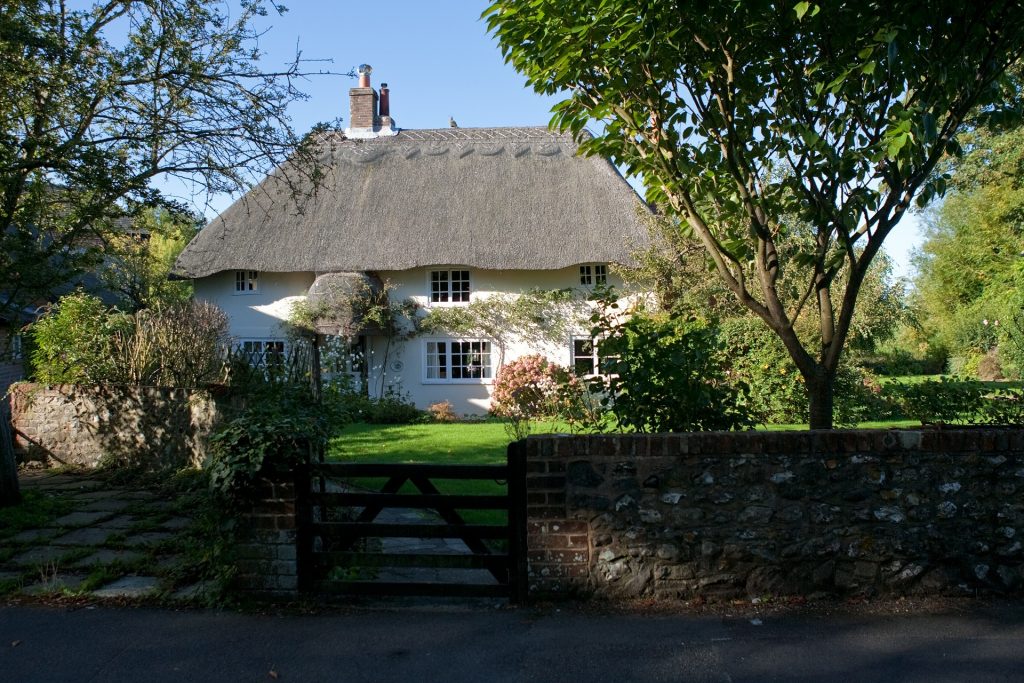Blog
Moving to East Anglia – What are the Common House Types?

Norfolk and Suffolk boast some of the most diverse housing stock in the UK, with a mix of historic homes as well as more modern flats and apartments. Hamiltons Removals, one of the leading East Anglia removal companies, are based on the border between the two counties. Here we outline the main types of homes in both Norfolk and Suffolk, when they are likely to date from, and how we can help get you there.
Tudor Houses
These from the late 15th to early 16th century. The most impressive of these are manor houses built of brick or stone. However, many surviving houses from the period have timber frames which were often built by commoners or homeowners of more modest means.
Tudor homes can be found all over the region, but particularly in Norwich’s historic city centre along with the so-called ‘wool towns’ of Lavenham, Long Melford and Clare in Suffolk.
Flint Cottages
Flint has been used as a building material since Roman times, when it was mainly used for forts and defensive structures. It was also commonly used in Saxon and Norman churches in areas where the supply of flint was plentiful, and other materials were hard to find.
Most flint cottages in East Anglia today date back to the 14th, 15th and 16th centuries. After that date, flint was either replaced by, or used in combination with, other materials such as brick. Today, flint homes are particularly common in villages and towns close to the coast, such as Sheringham and Brancaster in Norfolk.
Thatched Cottages
There are still a few of these types of cottages in East Anglia, most of which use water reed for the thatch. However, as with the rest of the UK, the use of thatch as a roofing material began to die out from the late 1800s. The perceived risk of fire makes them hard to insure. It is also a very expensive and labour intensive method of covering your roof compared to other methods such as tiling.
Georgian, Victorian and Edwardian Houses
Georgian homes date from the early 18th to early 19th centuries. The main features of these homes are space and high ceilings, particularly on the upper floors (because servants usually occupied the smaller lower floors).
Victorian homes date from the 1830s to the turn of the 20th century. These are characterised by high ceilings and large windows, just like Georgian homes. However, they were generally more cramped than before (often two-up, two-down).
Edwardian homes span a much smaller timeline, from the 1910s to 1930s. They have more space than Victorian homes, partly as a rejection of the mass-produced small homes of the previous period. This is why they are also more likely to have a garden and other individual touches such as floor tiles and stained glass.
All of the three types above can be found in terraced streets of Norwich city centre.
Barn Conversions
Barn conversions became popular in the 1970s and 80s. After this, stricter planning laws were brought in to ensure the original aesthetics of buildings were not lost. They are more likely these days to be open plan than segregated into multiple rooms.
Barn conversions are common across rural areas of Norfolk, Suffolk and Essex as farmers sought to diversify income streams as farming became less profitable. Many opted to convert old or unused agricultural buildings into properties such as holiday cottages which could either be let or sold.
Modern Developments
The first wave of what we would now call housing estates came just after the 2nd World War when families were moved out of London to the GLC Overspill areas in Haverhill, Sudbury, Bury St Edmunds and Thetford. This was because of poor quality housing in the capital (as a result of bombings and old and inadequate cramped housing) and problems with overpopulation.
Homebuilding has continued apace throughout the decades since, largely with brick homes, although the construction industry has been affected by recessions, planning regulations and more recently the coronavirus pandemic.
The most modern developments in the region include the town and city centre apartments found on the Waterfront in Ipswich and the Riverside in Norwich.
Hamiltons Removals – One of the Leading East Anglia Removal Companies
Whichever type of home you are interested in, Hamiltons can help get you there. Our local knowledge comes in particularly handy if you are interested in removals to Norfolk or Suffolk.
Our services include free online removal quotes, that are followed by a more comprehensive one which can either be done as an in-person visit or a video survey. We can even do all your packing for you so you have more time and energy to concentrate on the move itself and the paperwork.
To learn more about how we can help you move, click here
« Back







